Search Results
Fine Jewelry University Articles matching: “BLUE STAR”
Showing only FJU Article results. Click here to show all results.
Fine Jewelry University (Show All FJU Articles)
-
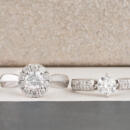
Anatomy of a Ring
… ring has a shank. This is the technical term for the band of metal that encircles the finger. There would be no ring without the shank. If the ring has a distinct design feature on the top part, the ring shank is generally said to start at the point that the design stops. A jeweler will usually add or remove metal from the bottom of the shank when sizing a ring. This can sometimes be done so well that you would never know it was sized looking at the shank with your …
-
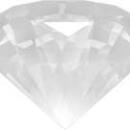
Fake Diamonds: The Great Diamond Attack
… and diamond lookalikes. “What is a real diamond?” is a difficult question these days. And the problem of separating a fully natural diamond from all the modern possibilities is quite demanding. So what is a real diamond? Let’s start with the older diamond look a likes, (CZ, GGG, YAG, Synthetic corundum and spinal, Glass) or simulants are quite easy to separate. The diamond tester and understanding gem properties make choosing the diamond an easy task with these older …
-
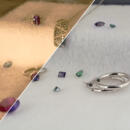
Gem in the Spotlight: Alexandrite
… source the stone will reflect more of the accent colors of light. Since fluorescent light has a stronger greenish-blue component, the stone appears greener. Under candlelight, which has a much stronger red/orange component, the stone …matter the occasion or budget, our gemologists will be able to find the right stone for you. Contact us today to
-
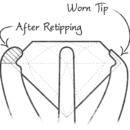
Jewelry Repair FAQ
… alloyed with pure gold to make it white, and there isn’t one, perfect formula. Each manufacturer has their own secret sauce that they use to try to achieve a brilliant and pure white color without the need for rhodium plating. Our Star White Gold is a great example of this. If you’re curious, you can learn more about gold purity here. How can I tell if my diamond is loose? Losing a diamond or gemstone out of a ring of any size is a sad experience, and losing a big …
-
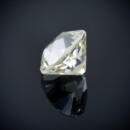
The History of Diamond Cuts
…culet (the point at the bottom of the diamond). Diamonds have gone from one facet (the table) to 18 facets. This cut started to unlock the brilliance within the diamond, and variations of it are still used today. Another early diamond cut… are four triangle facets that point towards the corners of the crown. This gives the appearance of a four-pointed star. The pavilion is cut into four main facets. Moving Towards Brilliance The evolution of the diamond cuts then takes a …
-
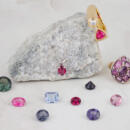
Gem in the Spotlight: Spinel
…with other gems and even today is often used as a substitute for similar looking stones. In recent years, spinel has started to move out of the shadows and be appreciated in its own right, and we can see why. Its colors rival even the … as the August birthstone! This change was officially made in 2016, but only in the last couple of years have we started to see the majority of the industry get on board. If you know someone born in August, it’s time to get excited. …
-
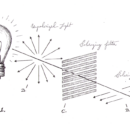
The Magic of Polarized Light
…, darken skies, and cuts out glare to help improve photo quality. Some filters can even be rotated on the lens to selectively see through the surface of water or only capture the reflection. Modern 3D movies: Unlike old school red and blue 3D movies, modern 3D uses two images along with a pair of glasses that have polarizing filters for lenses. This tricks your brain into thinking you are seeing a three-dimensional object using our perception of depth. Liquid crystal …
-
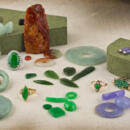
Gem in the Spotlight: Jade
…polish. Nephrite is commonly found in a darker olive green color but can also be very light green, orangey-red, black, and yellowish green. Jadeite can come in many different colors including pink, purple (often called lavender jade), blue, black, white, and the most valuable/desirable color: a vibrant green. The finest of all green jadeite colors is a saturated emerald green that is almost transparent, and it is called “Imperial Jade.” Jade is one of the top selling …
-

How Are Lab Grown Diamonds Made?
… is to create an environment of extremely high pressure and temperature where diamond growth can occur. Each process starts with a small diamond seed which is placed in carbon and put under very high pressure and temperature to grow the …above 2,000 degrees Celsius. In this environment, the pure carbon melts and begins to form into a diamond around the starter seed. On December 16, 1954, a belt press was used to create the first reproducible lab grown diamond. The diamond…